#swampfilmanalysis
Text
Discussion Leader Presentation
youtube
A-Ha released Take On Me in 1985. The band is considered to be a one-hit wonder. Take On Me is considered to be about a girl that the lead singer, Morten Harket, wanted to be with. The song is Harket’s attempt to convince the girl to give him a chance on him, to “take him on.”
The music video shows a girl going in and out of a 2-D world, symbolizing her going in and out of consideration of taking a chance on Harket.

The video we viewed is actually the second music video made for the song. The first was a simple video of the band members singing the song against a blue background. In this video, the live-action footage was traced with a frame-by-frame process called rotoscoping. It took 4 months to rotoscope the 3,000 frames in the video.
The video uses a romantic fantasy plotline. A young woman, who is played by Bunty Bailey, falls for the male lead of the video played by lead singer Morten Harket. The more time she spends with Harket, the more she wants to be with him. She becomes blinded by the enjoyment she has in the 2-D world that is obviously separate from reality.
Course In General Linguistic Ferdinand de Saussure
Through his lyrics, Harket uses de Saussure’s speech/la parole to verbally demonstrate why this girl should take a chance on him. The lyrics represent the language itself, the speech/la parole that de Saussure describes. The lyrics serve the purpose of Harket directly communicating to the girl as to why she should go out with him. Through the music video, Harket is using de Saussure’s language/la langue to visually show why the girl should take him on. According to de Saussure, langue is “the internal structure of the language, not the language itself.” The video serves as the internal structure and representation of the language itself. The lyrics themselves are the
The different realities in the video, both the 2-D world and the real world, represent two different signs. In the 2-D world, Harket is a sign for what the girl wants. In the real world, he is a sign for what she knows she can’t have. The opposite signs in each reality represent the tribulations of young love that Harket is struggling with, as proved by the lyrics of the song.
Mythologies Roland Barthes
In his essay, Mythologies, Roland Barthes defines “myth,” and how it affects how we as humans perceive and consume media. He says that myths help to convey messages and communicate. Every form of media that we consume has some sort of myth that conveys some sort of message or meaning of the media, whether it be a headline, a film, a novel, etc. In Take On Me’s music video, Harket references back to Barthes’ description of myths, in that he is displaying a false version of himself that seems more appealing in order to convince the girl to go out with him. The girl, of course, believes what she sees because she is infatuated and developing feelings for Harket. The myth in this video is Harket’s ability to bring the girl into this imaginary world, and the girl consumes and believes that myth because of her feelings for Harket, and her desire to be with him.
youtube
Harry Styles released Satellite in May 2022 as part of his third album Harry’s House. The highly anticipated album went on to win Album of the Year at The Grammys. The song seems to be about wanting someone that you cannot have. However, Harry Styles fans have also compared the song to what it feels like to be “the therapist friend,” and wanting to be there for someone important in your life.
The video follows a robot trying to find a satellite that he saw on the news while backstage at a Harry Styles concert.
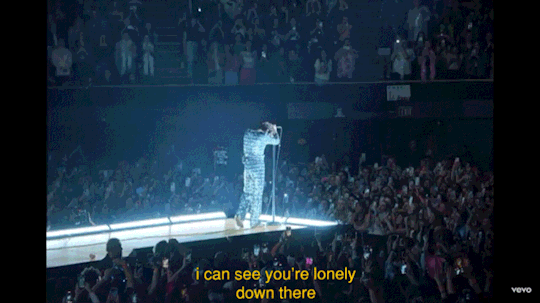
The video features footage of Harry and his band backstage and on stage before showing the robot, named Stomper, through California as it searches for the satellite. When it finally finds the robot after realizing it is in the sky, Stomper lays in a field next to Harry and slowly, his battery dies as they both look up at the sky.
The song seems to be about wanting someone that you cannot have. However, Harry Styles fans have also compared the song to what it feels like to be “the therapist friend,” and wanting to be there for someone important in your life. The video plays into the first idea by showing Stomper going in circles (like a satellite) while trying to find the satellite. Styles writes “Spinning out, waitin for ya to pull me in // I can see you’re lonely down there // Don’t you know that I am right here.” Styles clearly wrote these lyrics for someone to hear, likely someone he wanted to be close to but could not, whatever the reason may have been.
Course In General Linguistic Ferdinand de Saussure
The langue, or the unspoken language in this music video, is Stomper’s dedication to finding the satellite that he saw. Both Stomper’s dedication represent the speech/la parole, and the lyrics that Styles wrote are the speech because they are Styles’ direct translation of his feelings of wanting to be there for someone that he cannot have. Music videos are generally an additional form of media that provide a langue for the artists’ original speech. In both Satellite and Take On Me, the visual aspect allows the artist(s) to add on to the original speech/la parole that they had written by providing a representation of “the internal structure of a language, not the language itself,” as de Saussure described.
Mythologies Roland Barthes
In the video, Stomper ventures to find the satellite after seeing it on the TV backstage at one of Harry Styles’ concerts. There seems to be a hint of romantic interest behind Stomper and the satellite, which can be compared to Disney’s 2008 film, Wall-E.


The upbeat pace of the song, as well as the music video following Stomper on his search for his satellite, seem to serve as a “myth” that Stomper and his satellite will have a happy ending. Upon initial viewing, viewers might be awaiting Stomper finding his satellite because of the myths and signs providing false hope for a happy ending. Unfortunately, when Stomper realizes his satellite is in the sky and he cannot get to it, he sits in a field next to Harry Styles and looks up at the sky, before realizing that his battery is running low. He accepts it and looks back towards the sky, towards the satellite that he was dedicated to finding. He spends what he knows will be his last moments as close to his satellite as possible, knowing he will never be able to have what he so badly wanted.
Discussion Questions
The upbeat tune of Satellite gives the myth that the plot of the music video will have a happy ending. In what ways do song lyrics or beats provide false signs about the true meaning of the song (i.e. a sad song that sounds happy)?
Satellite and Take On Me have similar themes of wanting something you cannot have. Harry Styles’ hit song, As It Was, has been compared to Take On Me for having a similar sound. Besides theme and sound, how can songs be related to one another?
Take On Me and Satellite also have similar auras of being written to someone that the respective artists want to be close to. However, the aura of Take On Me may be overlooked as it is such a popular and catchy tune that listeners may sing along without digesting the lyrics. Similarly, it is unclear if Satellite was written for a friendship or relationship, or even a familial relationship. However, fans have interpreted the lyrics through many different lenses. In what ways can the auras of a song change?
4 notes
·
View notes
Text
Discussion Leader Presentation
Coldplay - The Scientist :
“The Scientist” by Coldplay is a song which dives into self-reflection, introspection, and the overall desire to go back in time to fix past mistakes. In an interview with the lead singer of Coldplay, Chris Martin, he explained that “It’s weird that whatever else is on your mind, whether it's the downfall of global economics or terrible environmental troubles, the thing that always gets you most is when you fancy someone.” He went on to say that the song is “just about girls.” In this way, it explores themes of love and loss as well as the constant search for meaning in one’s life. The lyrics convey a strong sense of regret and longing and allows the listener to contemplate the consequences of their actions. This is how this beautiful song continues to resonate with so many people emotionally.
youtube
The music video is known for its reverse narrative which uses reverse motion throughout its entirety. This was not the first time reverse motion was used in a music, as it is seen in The Pharcyde’s music video of “The Drop” in 1995 as well as Danny Wilson’s “The Second Summer of Love” in 1989. The use of reverse motion in this piece is really meant to be, since it describes Martin's wish to turn back time both visually and through the lyrics. It portrays Chris Martin moving backwards in time and eventually leading up to a frightening car crash with his girlfriend. This music video was also awarded multiple MTV Video Music Awards including best direction, best group video, and breakthrough video of the year in 2003.
Come up to meet you, tell you I'm sorry
You don't know how lovely you are
I had to find you, tell you I need you
And tell you I set you apart
Tell me your secrets and ask me your questions
No, let's go back to the start
It's clear in the first set of lyrics that Martin wants to start over with his girl and regrets parting ways. He also reinforces his feelings by describing his willingness to tell his deepest secrets in return to be in love again.

Louis Althusser, Ideology and Ideological State Apparatuses :
Both Coldplay’s “The Scientist” and Louis Althusser’s writings on ideology and ideological state apparatuses explore themes of introspection, self-reflection, and the influence of societal structures on individuals. While they may approach these themes from different angles, they both touch upon the complexities of human existence and the role of ideology in shaping our perceptions as well as our behaviors. Martin describes feelings of complexities in his life by clarifying his frustrations with the way his relationship fell apart and how the same situation is replayed in each attempt he makes. In mentioning "heads on a science apart," Martin emits the message that by looking at their relationship through a logical sense may evoke the feeling that it may never work, just as scientists analyze in a logical manner.
Runnin’ in circles, comin’ up tails
Heads on a science apart

Karl Marx - The German Ideology :
Karl Marx’s “The German Ideology” also shares similar themes to “The Scientist” by Coldplay in the way that both dive into critique of social structures and introspection. Although they may approach these themes from different perspectives (music vs. philosophy), both pieces touch upon the complexities of human existence as well as the influence of ideology on individuals in society.
“Consciousness can never be anything else than the conscious existence, and the existence of men is their actual life process.” (Marx 656)
I feel as though this quote from Marx represents how one can only learn his mistakes through his own life experience and that the existence of one's ideology is based on the process of their direct actions. Both in the lyrics and the music video, I think Martin's piece is parallel to this thinking.
The Beatles - Yesterday
youtube
Written and performed by Paul McCartney, Yesterday was first released in 1965 on the Beatles album Help! and reached number one in the U.S. Charts that year. With over 2,200 cover versions of the song, it stands as one of the most covered songs in the history of recorded music.
Although there is no music video to this song, this live performance by the Beatles at Studio 50 in New York City is still important in music today as it was extremely high production at the time. While it is an emotional song, the mass popularity of the Beatles was is quite evident by the constant yelling of fans throughout the act.
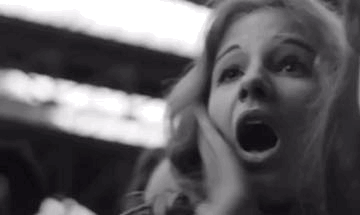
“Yesterday” by the Beatles is similar to “The Scientist” through its ability to describe lost love, self reflection, along with a longing for a different outcome of the past. Both evoke a strong sense of consciousness, nostalgia and the desire to go back and change how relationships or experiences turned out. Martin and McCarthy share a similar message in their attempts to return to their former feelings and ponder as to how their actions may have soured the relationship. While the Beatles “Yesterday” displays a slightly different style of music, both pieces equally resonate with the listeners who can relate to these emotions and experiences conveyed by the artists.
Yesterday
All my troubles seemed so far away
Now it looks as though they're here to stay
Oh, I believe in yesterday
The lyrics of the hook, "Oh I believe in yesterday," are used to describe how McCartney wishes to go back to the troubles of his past relationship instead of remaining by himself and reflecting on how it could have gone differently. He then goes on to reflect on his own actions and wonders why she even walked out,
Why she had to go
I don’t know, she wouldn’t say
I said something wrong
Now I long for yesterday
Discussion Questions :
Are feelings of self-reflection, introspection, and critiquing social structures still relevant in a lot of music today?
Both songs use metaphorical language throughout the lyrics. What do these metaphors reveal about the artists' perspectives on life, regrets, and the human condition? How do they challenge or reinforce societal norms and expectations?
What personal lessons or societal critiques can listeners take away from these songs? How do they inspire or discourage us to reflect on our own lives and the world around us?
2 notes
·
View notes
Text
Discussion Leader Presentation
SABOTAGE - BEASTIE BOYS (JAN 1994)
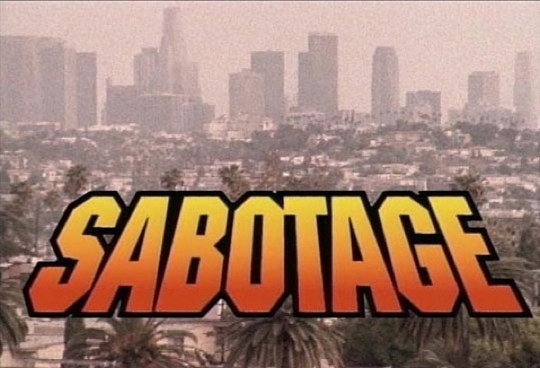
The Beastie Boys song Sabotage and music video was released in 1994. It was filmed throughout L.A. in Los Feliz, Echo Park, Silverlake, Hollywood, and Downtown Los Angeles. The message of this song is considered to be “anti-authority”. Although not revealed until 2020 in their documentary, the inspiration behind Sabotage was their former producer whom they felt was constantly "sabotaging" them. This song and music video has been reproduced in many formats. Different versions have been made, it has been featured in TV shows and movies (such as Futurama and an advertisement for Minions: the Rise of Gru), and performed on Saturday Night Live. In 2020, it was used as background music for a Biden campaign ad, criticising Trump's COVID response and featuring Biden wearing black shades jogging up into a plane.

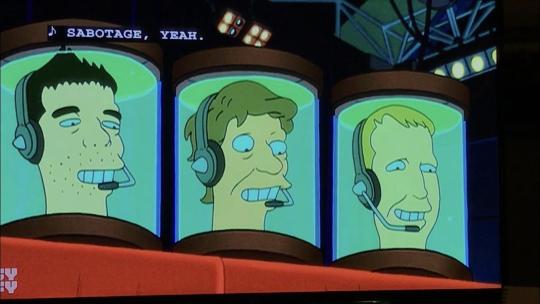
Our readings have introduced different perspectives on mass culture: the disappearance of the aura in Walter Benjamin's essay, how the culture industry functions within existing power structures in Horkheimer and Adorno’s essay, and how messages are created and received in Hall’s essay.
Considering these perspectives, the mass production and popularity of the music video for Sabotage by Beastie Boys reveals how the culture industry elevates and thrives off pieces which have vague and digestible meanings.
Sabotage in particular demonstrates the lack of autonomy a piece has after becoming a part of culture. Rather than having a clear intention or message, this song and music video seems to use vague emotional appeals, humour, and action to catch people's attention. The storyline is hard to follow, but it is reminiscent of crime dramas, except there's no distinction between "good" guys or "bad" guys. It shows authority figures causing chaos rather than fulfilling their supposed role. The appearance and behaviour of the policemen characters are exaggerated and silly. They're wearing fake moustaches, fake mullets, and sunglasses and are shown doing ridiculous and unnecessary things like jumping from building to building, spontaneously somersaulting, and eating donuts. This has the effect of making fun of policemen.

I wonder if there's a connection between the "anti-authority" interpretation and the L.A. Riots following the videotaped beating of Rodney King. Despite the proximity, the video doesn't seem to directly address this.
Regardless, the way it was received by the audience as “anti-authority” doesn’t take precedence over the way the culture industry functions, which is to produce copies and further profit off of the popularity of the song and music video. Through this process, the piece’s supposed “anti-authority” message gets distorted and weakened.
Taking from Walter Benjamin, its video format “substitutes a plurality of copies for a unique existence” (1236). The audience is separated from the context in which it was filmed. Taken out of context, the purposiveness of the piece is lost as it occupies new settings and may be interpreted completely differently. Because it is produced with this intention of mass consumption, which thrives off emotional appeal and relatability, the purpose or message gets somewhat diluted. According to Walter Benjamin, "it begins to be based on another practice - politics” (1237). This brings me back to the Biden campaign ad which uses this song with a supposed "anti-authority" reputation to criticise Trump (linked below 0:07 - 1:07).
youtube
According to Horkheimer and Adorno, the logic of a work is congruous with that of the social system (1242). In this case, while the Sabotage video might be considered anti-authority for its utter chaos and destruction, it doesn't specifically critique authority or demand an action. Rather, it seems like a crime drama parody, and it affirms what we already think. The theme of “anti-authority” may make people feel empowered, but this is similar to the aestheticization of war. It glorifies this catharsis of emotion that justifies the social system and power structures in place.
“The greater the decrease in the social significance of an art form, the sharper the distinction between criticism and enjoyment by the public. The conventional is uncritically enjoyed, and the truly new is criticized with aversion.” (Horkheimer and Adorno 1237)
FEEL GOOD - GORILLAZ (MAY 2005)

This is a very popular song by the Gorillaz, and it offers a critique of culture by depicting how consumers are numbed out on "good" emotions and trapped inside this system that exists to profit off of musicians and consumers. Ironically, this song also hit No. 2 in the U.K. and No. 14 in the U.S., so its success depends very system that it criticises.

Above is a moving image of the character 2D, using a megaphone to try to get people to listen. He says,
City's breaking down on a camel's back
They just have to go, 'cause they don't know wack
So while you fill the streets, it's appealing to see
You won't get out the county, 'cause you're bad and free
You got a new horizon, it's ephemeral style
A melancholy town where we never smile
And all I wanna hear is the message beep
My dreams, they got a kissing
'Cause I don't get sleep, no
The lyrics are hard to understand on their own, but paired with the visual of 2D walking over all these people lying on the ground, not paying attention to him, it becomes clear that he's trying to get a message out, but no one is listening. The words he speaks into the microphone become thin air, and everyone is too numb to hear him.

He then looks out the window and sees Noodle floating on an island peacefully playing music. Birds are chirping in the background, and during this part of the song, the sound and voice changes creating a more peaceful and faraway feeling. However, in the video, you can see that there are helicopters chasing Noodle down, suggesting that she will inevitably get trapped in the culture industry. This reminds me of a quote from Horkheimer and Adorno: "Talented performers belong to the industry long before it displays them; otherwise they would not be so eager to fit in" (1243).
The reading and the music video suggest the inevitability that the forces of the culture industry are too strong to be resisted, and any talent will be pulled into its orbit and pushed through its system to the masses.

Throughout the music video 2D seems stuck and anxious to find a way to escape and get other people to hear what he's saying. When De La Soul comes on speaking on the big screens, 2D looks up frightened and seems to feel cornered into becoming part of the system although he doesn't want to. There's a lyric sung by De La Soul that goes,
Gon' bite the dust, can't fight with us
With yo' sound, you kill the Inc
So don't stop, get it, get it (get it)
Until you're cheddar headed
It demonstrates the feeling of pressure on 2D to keep going, and De La Soul is convincing him that his song with this message can "kill the Inc".
What I find interesting about this song is that while it is a critique of the music industry and mass culture, because it functions within that very system, its message may be overlooked. Horkheimer and Adorno say that culture has an "economic mechanism of selection... there is the agreement - or at least the determination - of all executive authorities not to produce or sanction anything that in any way differs from their own rules, their own ideas about consumers, or above all themselves" (1244). Despite its critique of the system, this song still abides to the rules of the culture industry, in the way that it has been produced and received by the public. Producers are aware of this, so producing a song that critiques the music industry doesn't worry them because it doesn't change the power structures. In this instance, the song became very popular. This reminds me of a quote from Walter Benjamin:
"Its self-alienation has reached such a degree that it can experience its own destruction as an aesthetic pleasure of the first order." (1210)
This song is a good example of this because it was created with a message that reflects a feeling of alienation, yet it is an upbeat song meant to make us "feel good" and succeeds at that. Without analysing it, the meaning can go completely overlooked. Like Hall says, "if the meaning is not articulated in practice, it has no effect" (508).
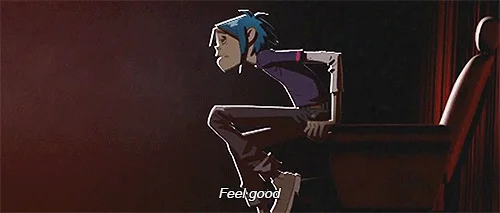
Questions for analysis:
How does the transferability of media to different platforms and contexts enhance or dilute the meaningfulness/impact of a piece?
In both music videos, to what extent does the author's intention have authority over the meaning and significance of the piece?
Do you think the culture industry is always self-reinforcing, or are there areas of contradiction where multiple forces are at play? How do these potential areas of contradiction shape or change the way the culture industry functions?
2 notes
·
View notes
Text
Discussion Leader Presentation
"Encoding, Decoding" by Stuart Hall
In “Encoding/decoding” Stuart Hall details three positions that people may take upon decoding a television message. Hall argues that the negotiated position is one where the populace understands and partially agrees with the intended, dominant messages encoded while also disagreeing with some elements of the messages. Hall describes negotiated decoding as, “Decoding within the negotiated version contains a mixture of adaptive and oppositional elements: it acknowledges the legitimacy of the hegemonic definitions to make the grand significations (abstract), while, at a more restricted, situational (situated) level, it makes its own ground rules - it operates with exceptions to the rule. It accords the privileged position to the dominant definitions of events while reserving the right to make a more negotiated application to ‘local conditions’, to its own more corporate positions.” Hall argues that this position of decoding allows for the audience to understand and often agree with the dominant message given they have put their own rules in place to coexist with the dominant message.
Beastie Boys, Sabotage (1994)
youtube
The music video for "Sabotage" by The Beastie Boys is a humorous parody of 1970s cop television shows, featuring the band members as comically exaggerated characters in a high-energy chase scene filled with stunts and explosions. The majority of audiences loved the music video for its goofy and fun nature while some also speculated the presence of an underlying anti-authority message. For years the meaning of the song was left for speculation until it was later revealed in the band’s memoir that the inspiration for the song was rooted in the band’s frustration with their producer, Mario Caldato Jr, who would push the band to finish tracks in an attempt to complete as many as possible.
The music video was encoded to poke fun at and indirectly call out their producer for essentially sabotaging various tracks of theirs by putting on costumes and performing wild stunts. Audiences, in turn, decoded the music video from a negotiation position as they resonated with the anti-authority sentiment while instead directing those feelings towards police and law enforcement at the time.
Rick Astley, Never Gonna Give You Up
youtube
In the "Never Gonna Give You Up" music video, Rick Astley performs in various 1980s settings where he passionately sings and dances while encoding a message of unwavering love and commitment to someone he deeply cares about by staying with them and never giving up on them. The video is also renowned for its connection to the internet meme "Rickrolling" where viewers are unknowingly redirected to the music video after clicking on a link.
The song's transformation into an internet meme through "Rickrolling" illustrates how the song was decoded through a negotiation position. Viewers began to decode the song in a humorous and subversive way, using it to playfully prank others online. This decoding led audiences to associate the song's meaning not only with a heartfelt declaration, but also with a symbol of internet culture's ironic and unexpected twists while also keeping the theme of resilience as the internet never gave up on the use of this playful prank.
Discussion Questions
What are some other pieces of media that received negotiated coding?
Did you pick up on any other messages from the Sabotage music video?
In which medium do you tend to find more negotiated coding?
2 notes
·
View notes
Text
Discussion Leader Presentation
"The Scientist" - Coldplay
About: The Scientist by Coldplay is about how life isn’t easy. The song and music video are centered around this journey you have with someone, in this case, a partner. The video presents Chris Martin, the vocalist and pianist of the band, going back in time, revealing that he lost his partner in a car crash. The concept of time going back is to show that sometimes we want to go back to the good moments and/or change the bad moments. It leads to the idea that no one knows everything about life, we go through ups and downs in life that we can’t have full control over.
youtube
The title itself, I believe juxtaposes the message of the song because the ideology of a scientist is to be “non-ideological” in a way because they focus on data, and proving facts, but people’s experiences can't be “proven” in some way, they just happen. I think Coldplay was trying to portray the mindset of a scientist, trying to understand how things happen in life that we don't always have control over. There’s that conflicting juxtaposition of not knowing if you should listen to your head or heart. The song says...
Questions of science, science, and progress
Do not speak as loud as my heart

These lyrics show the conflict between listening to your head, which represents a more “scientific” way of seeing things and the heart being the emotional part of your thoughts. There is no scientific solution to having regret and complex feelings about losing a loved one.
"Ideology and Ideological State Apparatus" by Louis Althusser
Ideology also is made up of consciousness, according to Althusser in “Ideology and Ideological State Apparatus“ the author says, “ideology existing in a material apparatus, prescribing material practices governed by a material ritual, which practices exist in the material actions of a subject acting in all consciousness according to his belief” (Althusser 697). This is saying for people to have beliefs they have to start with being conscious and then that leads to beliefs that cause many things. This idea of consciousness can be seen in “The Scientist” because Chris is becoming conscious of the mistakes he made and wants to go back in time to change things. Similarly the song “When I Was Your Man” by Bruno Mars, I believe has this concept of regretting and wanting to change.

"When I Was Your Man" Bruno Mars
youtube
The song “When I Was Your Man” by Bruno Mars is about reminiscing about the time he was with someone and how he didn't treat her well. The actual music video is only Bruno Mars playing the piano in an isolated space. This isolated space shows how Bruno is reflecting on his mistakes with his past partner. The song itself says...
“Should have give you all my hours
When I had the chance”
Shows how he didn't give her as much attention as he should have, when he could Now that he sees her with someone that treats her better than him, he wishes he could treat her better. Bruno Mars regrets the way he was, and it “haunts” him every time he closes his eyes. This song is similar to The Scientist by Coldplay because they’re both about losing a loved one and regretting many things. There’s this awareness of the situation, they’re conscious that they made mistakes. This consciousness of what happened is what is creating these ideas of wanting to go back in time living more in the moment and changing things for the better.

"The German Ideology" by Karl Marx
Marx also brings up this idea saying “Life is not determined by consciousness but by life” (Marx 656). This is saying that the experiences in life, meaning the interactions we have with society influence our ideology. The Bruno Mars song can clearly present this because the interaction of seeing the girl with another guy is what influenced him to think he made a mistake. That interaction caused him to miss her and regret the way he was. As well as “The Scientist” that moment of losing his partner in a car crash was impactful, it shaped part of his ideology of the importance of appreciating the time you have with loved ones because you can't go back in time to experience them again.
Discussion Questions:
Do you think the songs and messages convey a modern relationship and its complexities? Do you think it influences the audience own ideologies in their relationships? Or is it just another love song?
How do the narrators' actions in the songs relate to traditional ideas of masculinity and relationships? Does it have any certain cultural or social beliefs about love?
Many of us have experience regret in life, do you believe it's a large part of our ideology?
1 note
·
View note
Text
Discussion Leader Presentation "Ideology"
Another Brick in the Wall Part 2
"Another Brick in the Wall Part 2," by the band Pink Floyd, was released in 1979 and revolutionized the music industry. The song is a direct protest against teachers, especially of that time, that would strictly enforce and indoctrinate their views and ideologies upon their students. The education system and teachers were often prioritizing student's subservience and academic performance, rather than their creativities, ambitions and even their wellbeing. Students were churned into one mold, designed to become obedient and simply cogs in the societal machine.
youtube
The themes of Pink Floyd's "Another Brick in the Wall Part 2" directly relate to Karl Marx's teachings of ideology. In his manuscript, "The German Ideology," Marx explains how labor workers and those of lower classes are used and exploited for the benefit of the bourgeoisie, or the rich. This process begins at the school system, which the song demonstrates, where children are designed to fit the ideals of the workforce; compliant to authority and robbed of their own ideologies or opinions. In doing this, the school system causes students to lose their own identities. This is made apparent in the visuals used throughout the song, such as the hammers walking in unison with no differentiation amongst them.

The hammers are also a symbol of control, quite literally displaying how the school system "hammers" their ideologies into students. All the children are hammered into the same template. Interestingly, the hammers also represent the Nazi regime which was known for the brainwashing of ideologies amongst their own people. These themes correlate with Antonio Gramsci's "Hegemony," as he discusses the ideas of government's control over their people with the false notion of "consent." Lower class citizens and laborers are bent into submission by those who have power, with the illusion that since they are a part of the society they are to actively consent to the dominance of their superiors.
The teacher is displayed as monstrous in appearance, quite literally putting children into a meat grinder that represents the school system. The outcome is a pile of meat, devoid of personality and life.

While the students are the central focus of the visual text, the song displays how teachers are also puppets of the school system and are subjected to the government's hegemony.
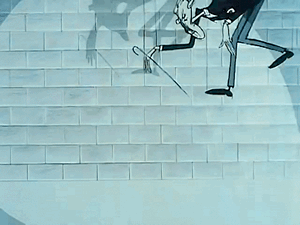
Depicted in this image, is quite literally the teacher tied to strings being used as a puppet. He too is under the control of those that have higher authority over him. The teacher's ideologies and abusiveness towards his students are also traits that have been indoctrinated into him by his superiors. The teacher's ghoulish appearance and lifelessness is a clear representation of how society drains one of their ambitions and characteristics.
Active protest to such control by the school system and the government is made in the lyrics:
We don't need no education
We don't need no thought control
No dark sarcasm in the classroom
Teacher, leave them kids alone
Fortunate Son
"Fortunate Son," released in 1969 by Creedence Clearwater Revival, is a protest song against the Vietnam War and the American government as a whole. During the Vietnam War, those of higher status and wealth did not have to fight in the war while tens of thousands of lower class citizens were drafted to die for their country and its ideologies. Again, they were forced to be subservient to authority, with the safety of their lives literally being dictated by their societal status.
This song relates to Pink Floyd's "Another Brick in the Wall Part 2," as both songs are made in reference of revolting against government corruption and put on display the sacrifices one must make for those who are deemed superior.
youtube
The music video demonstrates these themes a in lighter, more hopeful sense. The video shows lower class citizens still enjoying their lives in the presence of one another, rather than in materialistic riches. However, the themes of anti-authority and anti-elitism are still very much present.
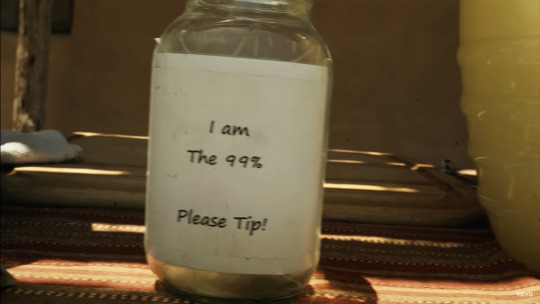
Images such as these depict the struggles that lower class citizens face and the arduous work that one must endure to live in society. Again, this ties into society's false sense of consenting to its principles. The government promotes the idea that one consents to its ideals by being a part of society, giving one no choice but to do so, as not consenting would force one to live homeless, foodless and ironically, without their natural liberties. This relates to the lives of those who served in the Vietnam War, as in order to be a part of society, they had no choice but to fight a war that was created based on the ideologies of the government.
The US government invaded Vietnam to prevent the spread of communism, placing their own capitalist ideologies above the lives of the laborers of society.

It ain't me, it ain't me
I ain't no senator's son, son
It ain't me, it ain't me
I ain't no fortunate one, no
Some folks are born silver spoon in hand
Lord, don't they help themselves, Lord?
But when the taxman come to the door
Lord, the house lookin' like a rummage sale, yeah
It ain't me, it ain't me
I ain't no millionaire's son, no, no
It ain't me, it ain't me
I ain't no fortunate one, no
In the music video and lyrics, the phrase "It ain't me" is used to describe how the working class do not get the same luxuries as the rich. They are not born with a "silver spoon in hand," and instead must work rigorously and, in some cases, are even are forced to surrender their lives for their government.
Discussion Questions:
Do you believe that protest music such as "Another Brick in the Wall" and "Fortunate Son" inspire the youth to stand up for themselves and revolt against injustices?
2. In what ways have these visual texts increased societal awareness? Have they been used to foster change? If so, how and when?
3. It can be argued that this music helps the mental health of those who are feeling oppressed. Do you believe this is true?
1 note
·
View note
Text
BBHMM through the lens of text: “The Culture Industry as Mass Deception” (Kira)
Bitch Better Have My Money
The song Bitch Better Have My Money (BBHMM) was released in 2015 by Rihanna. The song became very popular as soon as it was released, it immediately began climbing the charts. The lyrics and title give us an overarching idea that someone owes Rihanna money. At first glance the song is very straight forward, I think that the complexity lies in the visuals, not so much in the lyrics.
The music video is very shocking and includes explicit language, nudity, violence, drinking and smoking.
youtube

This part of the video is a hint as to what inspired the video.
There are speculations that the song is about her former accountant who, in 2009, mismanaged her finances, badly. In 2012, she sued him and won $10 million back. The speculated meaning behind the song doesn’t really have that much of a deeper meaning, then her accountant screwing her and her winning a lawsuit against him.
In “The Culture Industry as Mass Deception” by Max Horkheimer and Theodor Adorno, they argue that because of the culture industry and mass culture, media has become so singular and predictable. Horkheimer and Adrono state that, “as soon as a film begins, it is quite clear how it will end, and who will be rewarded, punished, or forgotten” (1244). This quote shows the predictability and lack of creativity that Horkheimer and Adorno identify in the culture industry.
I found that BBHMM goes against this idea of the culture industry and mass culture. In terms of the predictability of the video, I think it was made very clear at the beginning that she was frustrated, but I honestly wasn’t sure what I was about to watch. To me, it all came together at the end of the video.


When it comes to music, Horkheimer and Adorno explain that especially when it comes to audio (music) and stars, they have become so consistent and unchanging, they are categorized and shaped to fit into a specific mold. Individuality and uniqueness in media, music, artists, etc., is so rare because “The culture industry as a whole has molded men as a type unfailingly reproduced in every product”(1245). So many artists have the same sounds, vision, style etc. That sound and style proved to work when gaining followers and fans, so the next generation of artists groomed into that “style”. This is because recording labels and artists only want two things, fame and money. If they see a “trend” or “style” of a popular artist, they use that same “image” for other artists. This leads to the lack of originality of popstars, artists and their music.
The way I see it, BBHMM is anti-culture industry, it pushes the boundaries of music videos with its crude and intense visuals. I think of this video as a retaliation against the culture industry because as Adorno and Horkheimer stated in the text, “Today aesthetic barbarity completes what has threatened the creations of the spirit since they were gathered together as culture and neutralized”(1245). The radical and graphic video that Rihanna created was her not following the “rules”. In the video she didn’t stick to a “feminine” aesthetic, the character she portrayed had very “masculinized activities”. She wasn’t a passive or submissive character but rather a very aggressive and hostile character. She plays a very savage and vengeful character.
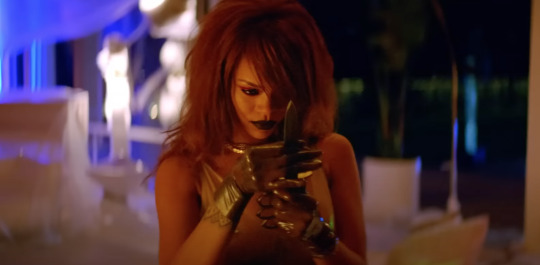
Female artists who approach music and their videos with this much gore, nudity,etc, have this element of “shock” that creates buzz and brings attention to their music. While that's true I also feel as though it's their way of retaliating against the greater music industry. They are breaking the stereotypical “image” of female artists. There would have been a lot less noise and attention brought to this song if everything was the same except it was a male centered in the video. So not only was this song and video potentially about her former accountant and taking control, but it also was about her giving this message that “I’m not weak and I don’t just sit around for things to be done. I get up and do it myself”.
Being a woman in the music industry, let alone in a genre that is dominated by macho rap culture, is hard. Women are shoved in categories and expected to be the “perfect little popstar”. Adorno and Horkheimer identified this idea when they wrote that, “Talented performers belong to the industry long before it displays them; otherwise they would not be so eager to fit in. The attitude of the public, which ostensibly and actually favors the system of the culture industry, is a part of the system and not an excuse for it”(1243). Performers have to put on a persona that the public likes to see. They explain that the majority of the population is conditioned to like a very specific sound and a very particular look, something that appeals to all audiences. The music industry tends to produce this specific sound and look.
Doja Cat:
When I think of authenticity and individuality in the music industry I think of Doja Cat, whether you like her or not, she is a very unique artist. Doja Cat rose to stardom in 2018 when her song “Mooo!”, from her first album Amala, became popular among various social media platforms. After “Mooo!” became popular, she released Hot Pink in 2019, Planet Her in 2021, and most recently Scarlet.
youtube
These are two photos, one from her music video Like That, and the other one is from her more recent video Paint the Town Red.


Doja Cat has always had a very eccentric and unique artist, but at the beginning of her career she had a very feminine, bright aesthetic. Her fun, feminine, girlboss style was very liked by people and helped her gain millions of followers. People not only liked her aesthetic but they also really liked her personality, she was very bubbly, real and personable. However, recently she has shocked many people with her sudden style and personality change. She now has a very demonic, unapologetic (negative) and hostile aesthetic and personality. This big change caused her to lose many followers, but the followers that stayed were slammed with her insults.
In the song she has a line that says, “She a bad lil' bitch, she a rebel (walk on by), She put her foot to the pedal”. She is quite literally saying she’s rebelling and she's the one that makes things happen, make things go forward. So not only is the video pushing past the culture industry’s norm by creating a very unique and slightly horrifying video but she is also saying it in her lyrics. She is creating this “authentic” version of herself, even though people don’t necessarily like it.
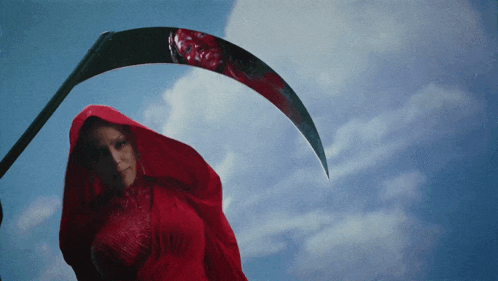
I feel like at the beginning of her career she did have a very bright and feminine aesthetic, but as time went on she realized that that's not who she was, but she stayed with that aesthetic because people liked it and it was growing her career. Many artists stay with their original aesthetic, for many reasons, but because this is the person who people became a fan of. If they change music style or aesthetic they face a lot of backlash, hate, lose followers and if drastic enough could bring their career down.
Questions:
Are there any other ways, in either videos, in which you see this idea of rebellion against the culture industry? Are there other songs or music videos that you see the push back against the culture industry?
Do you think that music and music videos are a good form of media to break down the culture industry? Are there other and more effective ways to critique the culture industry?
What different ways do you see the culture industry influence the people around you and your surroundings?
0 notes
Text
Strange Days (1995)
Jane Gaines's essay "White Privilege and Looking Relations: Race and Gender in Feminist Film Theory" examined the erasure of black women in cinema by white male filmmakers. To fully understand this point, Gaines relies on the history of this topic. Specifically, she states, “If, as feminists have argued, women's sexuality evokes an unconscious terror in men, then black women's sexuality represents a special threat to white patriarchy; the possibility of its eruption stands for the aspirations of the black race as a whole” (p. 303). In the film, Strange Days (1995),there is a strong representation of black female empowerment shown in the character of Mace. Initially playing the role of a bodyguard, Mace transforms into a powerful action hero who is constantly saving Lenny from dire situations. In one particular scene, Mace is shown cocking a gun in her holster between her thighs, held under her little black dress. The purpose of this shot is to give Mace a masculine role while still keeping her femininity intact. Tying back to Gaines’s argument, the role of a black female in this film is not to be overlooked, but rather, shown as an independent, kick-ass character. Between the love that Mace has for Lenny and her desire to keep him safe, she is represented in all different lights.
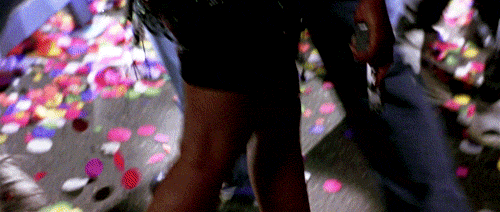
32 notes
·
View notes
Link
17 notes
·
View notes
Text
Strange Days (1995)
In “White Privilege and Looking Relations: Race and Gender in Feminist Film Theory,” Jane Gaines describes how black women tend to be included as a sort of afterthought in film, as if they are just a box to check for inclusivity. A lot of times, a black character (especially a black woman) is in a supporting role and isn’t considered to be the love interest. In Strange Days (1995), Mace’s character breaks this pattern. She is a strong female lead who is just as badass (actually, make that more badass) than her male counterpart. Her blackness is a significant part of the story and is part of how she fits into, and adds levels to, the narrative. It enhances the audience’s understanding of her horror at the atrocities committed by the two cops, as the crime rates are at an all time high and racial divides are incredibly tense. Lenny doesn’t have the words to describe the playback to her because it doesn’t affect him in the same way; his white privilege and background as a cop prevent that. It was a pleasant surprise at the end when the two share a kiss, as she wasn’t his love interest throughout the film. It’s only at the end when Lenny realizes his feelings for this powerful black woman, leading to a underrepresented mixed-race romance. Mace’s character breaks the conventions for black female characters as described in Gaines’s writing.

7 notes
·
View notes
Text
Mace > Faith
In the reading for this week, Jane Gaines’s essay White Privilege and Looking Relations: Race and Gender in Feminist Film Theory disputes different feminist theories, which she makes a point to state how some do not fully recognize the discrimination against women of color. Her reading also touches on women in film are made subject to the male gaze and how they play a bigger role in more than just “eye candy”. She states, “…women’s sexuality evokes an unconscious terror in men, then black women’s sexuality represents a special threat to white patriarchy; the possibility of its eruption stands for the aspirations of the black race as a whole” (p. 303) In the film Strange Days (1995), the audience gets to see and appreciate a powerful women of color. There were countless times when Mace came to Lenny’s rescue but one that stands out the most is when Philo sent him to the basement of his home and Lenny starts getting beat by three of his people. Mace comes in and single handedly fights off the three attackers and saves Lenny. Not at a single point was her character made to be sexualized by the male gaze. She just exuded raw strength and power. She exuded the “heteronormative” character we usually see played by men. She kept saving Lenny’s life, she had her emotions on lock, and she was the rational thinker. Mace embodied the idea Gaines had for a black women’s sexuality representing a special threat to white patriarchy.

7 notes
·
View notes
Text
Viewing Response 14: Strange Days (1995)
In Jane Gaines’ “White Privilege and Looking Relations: Race and Gender in Feminist Film Theory”, she argues that women’s sexuality is focused in the experiences and form of the white woman and almost always in the context of man versus female in film. The view of spectators outside of the white heterosexual male gaze is overlooked and not considered. The subject/object conflict between white men and women in film also leaves out large portions of society. Women of other genders and sexualities like lesbians and individuals of other races, in specific black males and females are not considered for their viewing pleasures and relatability to the screen. This idea can be seen in Katheryn Bigelow’s film Strange Days (1995) which reinforces the white heterosexual gaze, even though it was directed by a woman. Though this film does include a strong black female lead, the only sexualized figures in the film were white women and they were present throughout the film. This film also highlighted the subject/ object relationship between Faith and Philo which can be seen in the scene where Lenny approaches Faith and Philo in the club. Philo makes it a point to say that he ‘took’ Faith from Lenny which reinforces the idea that she is an object to be taken. This subject/ object relationship between the males and females is not a gaze that can be related to by groups like lesbians, but plague almost every movie.

6 notes
·
View notes
Text
Viewing Response 14: Strange days (1995)
In this week’s text, “ White Privilege and Looking Relations: Race and Gender in Feminist Film Theory” by Jane Gaines, discusses multiple feminist theories.The text also describes how the oppression of women of color is not fully grasped in some theories. For example, “In Marxist feminist analysis, the factors of race and sexual preference have remained loose ends; as categories of oppression they fit somewhat awkwardly into a model based on class relations in capitalist society” (page 294). In the Marxist theory it identifies racial conflict as class struggle, but this does not explain how exactly gender intersects with race. This theory fails to include females of color, such as Lornette “Mace” Mason from the film Strange Days (1995). This theory does not include instances such as the last scene where Mace was on the ground getting beaten to death by police officers weilding batons. Lornette Mason was awkwardly fit into this film where she worked as a bodyguard and drove a bullet-resistant car, while still having feelings for Lenny Nero. This awkward fit worked wonders for the film, however, by promoting a more accurate “gaze” of strong women of color.

6 notes
·
View notes
Text
Alien (1979)
In this week’s reading, “Film Bodies: Gender, Genre, and Excess” by Linda Williams we learn of a common thread in the pornographic, horror and melodramatic films of women being portrayed on screen as embodiments of pleasure, fear, and pain. She also touched on how the success of one of these films is measured by, “the degree to which the audience sensation mimics what is seen on the screen”(Williams, 605). In the film “Alien (1979)”, a well renowned horror film, we see how this statement proves itself to be true. In the scene where the character, Ellen, tries to get to the shuttle before the ship self-destructs, but unfortunately runs into the Alien and is forced to stop in her tracks and seize up, is a reaction the audience experiences as well. The audience has been following this character and rooting for her survival, and so once the audience is faced with the possibility of her dying in this scene, the spectator holds their breathe and dares not to move just as the character does, because of the fear and anxiety of what may follow. The effect the film has on the spectator’s bodily response can be seen as somewhat of manipulation, however, it provides proof as to how well the genre was able immerse the spectator into the experience of the character.
youtube
5 notes
·
View notes
Text
Do the Right Thing (1989)
In “Some Points on the Semiotics of Cinema” Christian Metz discusses the aspects of cinema that is central to the film, which he also defines as being the wording for a project that does not fall under the category of documentary. In his work, Metz talks about semiotics used in cinema. Semiotics are symbols or objects that signify an intended meaning or emotion. Unlike photography which has no specific shooting procedure for showing one idea, aspect or symbol, cinema allows for semiotics of denotation. The semiotics of denotation includes the concept of a montage which together articulate a particular point. In the film, Do the Right Thing, there are parts of the film that are put together very carefully using montage and close-ups to emphasize and signify particular moments that may not be as clear without them. One such example of importance is when the film highlights the issue of racism among all races and people in this time and not just between Pino and Mookie. After Pino and Mookie hurl insults at each other, the scene quickly cuts to the white police officer using racists slur that reference the Korean man and the camera then cuts to him and so on. As the scene continues, the racism progresses between each race that is present in that New York neighborhood and although these people aren’t speaking directly at each other the direct cuts allow the viewer to put together the thoughts that these people truly have inside.
youtube
7 notes
·
View notes
Text
Viewing Response 14: Strange Days (1995)
In Strange Days, the main character Lenny Nero deals underground virtual reality recording around an apocalypse filled Los Angeles on New Years 1999 into 2000. One of the recordings includes a murder of a friend. He reaches out for help to his loyal friend Mace, and they try to solve the murder of their friend. Along the way, the killer leaves recordings of other situations that happened. Towards the end of the film, the duo split up in order to save Faith, an ex lover of Lenny. It is then revealed that the murderer was a friend to the duo, and betrayed them as well as tried to frame them.
What makes Strange Days different is Mace is a black female character. In Jane Gaines’ “White Privilege and Looking Relations: Race and Gender in Feminist Film Theory”, she states, “the factors of race and sexual preference have
remained loose ends; as categories of oppression they fit somewhat awkwardly
into a model based on class relations in capitalist society.” This is important because Mace is revealed that she has not only always loved Lenny, she is an independent bodyguard who likes to take situations into her own hands. This awkward fit works perfectly into the model of independent woman into her own society.
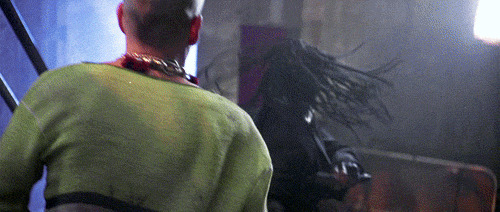
3 notes
·
View notes